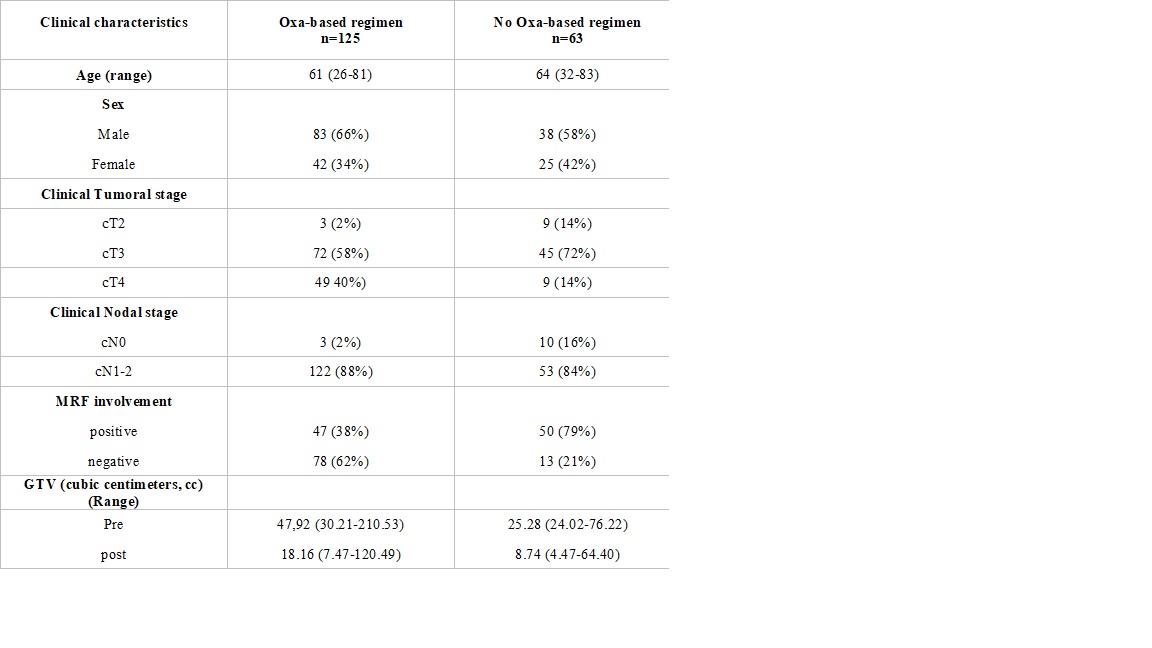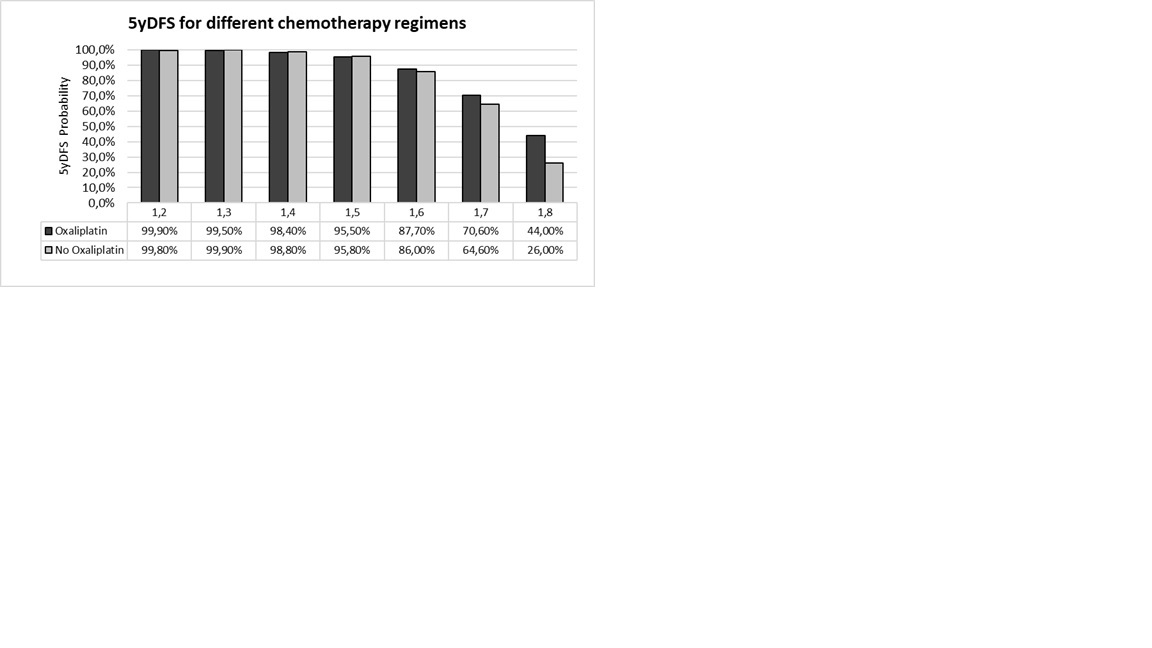Fractal-based radiomic approach to tailor the chemotherapy treatment in rectal cancer
PO-1327
Abstract
Fractal-based radiomic approach to tailor the chemotherapy treatment in rectal cancer
Authors: Giuditta Chiloiro1, Carmela Di Dio2, Davide Cusumano2, Francesco Catucci2, Luca Boldrini3, Angela Romano3, Elisa Meldolesi3, Fabio Marazzi3, Barbara Corvari3, Brunella Barbaro4, Riccardo Manfredi4, Vincenzo Valentini3, Maria Antonietta Gambacorta3
1Fondazione Policlinico universitario A. Gemelli IRCCS, Radiation Oncology, Rome, Italy; 2Mater Olbia Hospital, Radiation Oncology, Olbia, Italy; 3Fondazione Policlinico universitario A. Gemelli IRCCS, Radiation Oncology, Roma, Italy; 4Fondazione Policlinico universitario A. Gemelli IRCCS, Radiology, Roma, Italy
Show Affiliations
Hide Affiliations
Purpose or Objective
Several studies have been conducted to evaluate the efficacy of adding
of Oxaliplatin (OXA) to neoadjuvant
chemoradiotherapy (nCRT) in patients with locally advanced rectal cancer (LARC), however the benefit remains unclear. Such as the 25% of patients
develop metastases within five years after the end of surgery, a strategy to
validate the role of nCRT intensification regimens in patients at higher risk
of developing metastases should be investigated.
Aim of this study is to create a radiomic model able to calculate the
probability of 5-years Disease Free Survival (5yDFS) when OXA is or not
administered in patients affected by LARC and nCRT, allowing physicians to
choose the best chemotherapy (CT) regimen.
Material and Methods
Patients with cT3-4 cN0 or cT1-4 cN1-2 rectal cancer were
treated according to an nCRT protocol that included concomitant CT schedules
with or without OXA and radiotherapy dose of 55 Gy in 25 fractions.
Radiomic
analysis was performed on the T2-weighted Magnetic Resonance (MR) images
acquired during the initial
tumor staging. Statistical
analysis was performed separately for the cohort of patients treated with and
without OXA, respectively. The ability of each single radiomic feature in
predicting 5yDFS as a univariate analysis was assessed using the Wilcoxon Mann
Whitney (WMW) test or t-test. Two logistic models (one for each cohort)
were calculated, and their performance was assessed using the area under the
Receiver Operating Characteristic (ROC) curve (AUC).
Results
A total of 176 image features belonging to four
families (morphological, statistical, textural and fractal) were calculated for
each patient. The clinical characteristics of the patients included in the
study are summarised in Table 1.
At univariate analysis the only feature showing
significance in predicting 5yDFS was the maximum fractal dimension of the
subpopulation identified considering 30% and 50% as threshold levels (maxFD3050).
Once the models were developed using this feature, an AUC of 0.67 (0.57-0.77) and 0.75
(0.56-0.95) was obtained for patients treated with and without OXA, respectively.
A maxFD30-50 >1.6 was correlated to an
higher 5yDFS probability in patients treated with OXA. Figure 1 summarizes the
values obtained in terms of 5yDFS probability when Oxaliplatin is or is not
administered to varying of maxFD3050 values, applying the two models developed.
Table1

Figure 1

Conclusion
This study suggests that radiomic
analysis of MR T2-w images can be used to define the optimal concomitant CT
regimen for LARC cancer patients.
In particular, by providing an
indication of the GTV spatial heterogeneity at initial staging, maxFD3050 seems to be able to predict the
probability of 5yDFS. New studies including a larger cohort of patients and
external validation sets are recommended to verity the results of this
generating-hypotheses study.